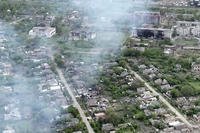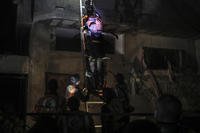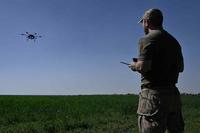Those who worry that President Obama's Afghan withdrawal date sets a dangerous benchmark may be reassured by predictions that the US is likely to have 90,000 troops still in country at the end of 2011 and around 70,000 by the end of 2012.
Those predictions are courtesy of Michael O'Hanlon, one of the best analysts of military operations around. O'Hanlon, who works for the Brookings Institution, was speaking at a Friday breakfast forum put together by the Institute for the Study of War, a fairly new Washington thinktank that fought hard for an Afghan surge.
O'Hanlon and fellow defense analyst Ashley Tellis, from the Carnegie Endowment for International Peace, said Obama's declaration of intent to begin pulling out troops within 18 months created a useful and dynamic tension that could help allies and Afghanistan understand that the United States is serious about crafting a solution to the Taliban insurgency.
But Tellis, who served on the National Security Council during the last Bush administration, was less sanguine than O'Hanlon about the prospects for successful juggling of the pressure to achieve results and to remain committed to an effective counterinsurgency, saying it is "very very difficult to pull off successfully." He was also skeptical of the Obama administration's ability to "declare victory" after 18 months no matter what resources we pour into Afghanistan.
In terms of the tools being used by Gen. Stanley McChrystal, commander of allied forces in Afghanistan, O'Hanlon said that about "half of the mission of the [U.S.] combat troops" deployed to theater is what he called "apprenticeship" with Afghan combat forces. Pointing to our experience in Iraq, he said that such close work with Afghan commanders and their troops would help the US find and encourage the best Afghan leadership material. He also stressed that the US must "find a new way to train Afghans." Sending them to six to eight weeks of school just doesn't hack it. They need extensive on the ground experience --with bullets flying -- to build a quality force.
O'Hanlon, who visited Afghanistan last month, also said that the nascent "Community Defense Initiative" -- McChrystal's attempt to encourage an Afghan version of the Anbar awakening -- is "accelerating dramatically at this point." He said the US must strive to avoid creating tribal militias with the program. Instead, allied commanders must ensure they approach elders of "several different tribes" to gather in a shura or council and pool fighters to create community police groups.
Some Afghans have expressed concern about the CDI, including Nader Nadery, a member of the 10-member Afghan Independent Human Rights Commission. Nadery warned earlier this week that the initiative “is indeed a matter of concern for us who work to promote the rule of law and protect human rights.”
O’Hanlon, clearly aware of these concerns, said financial support should not go directly to the men who join these groups. Instead, the money should go to the community. And there must be "pretty strict rules" to ensure the groups don't create more turmoil than they solve, O'Hanlon said. The groups should not be allowed to carry weapons beyond the area they patrol. They must agree to prevent the Taliban from entering their zone of operation. And they must not use their new position of power to intimidate fellow citizens.
To put all this in a bit of context, the Marines announced this morning that they have launched a major offensive with Afghan forces against the Taliban, the first since President Obama ordered his new strategy be implemented.
The Associated Press reporter that, "Hundreds of troops from the 3rd Battalion, 4th Marines and the Marine reconnaissance unit Task Force Raider were dropped by helicopter and MV-22 Osprey aircraft behind Taliban lines in the northern end of the Now Zad Valley of Helmand province, scene of heavy fighting last summer, according to Marine spokesman Maj. William Pelletier.
"A second, larger force pushed northward from the Marines' Forward Operating Base in Now Zad, Pelletier said. Combat engineers were forcing a corridor through Taliban minefields with armored steamrollers and explosives, Pelletier said.
"In all, about 1,000 Marines as well as Afghan troops were taking part in the operation, known as "Cobra's Anger," he said."
Note in particular the use of Ospreys. It will be interesting to hear whether these went into hot landing zones or flew into fairly quiet LZs.








